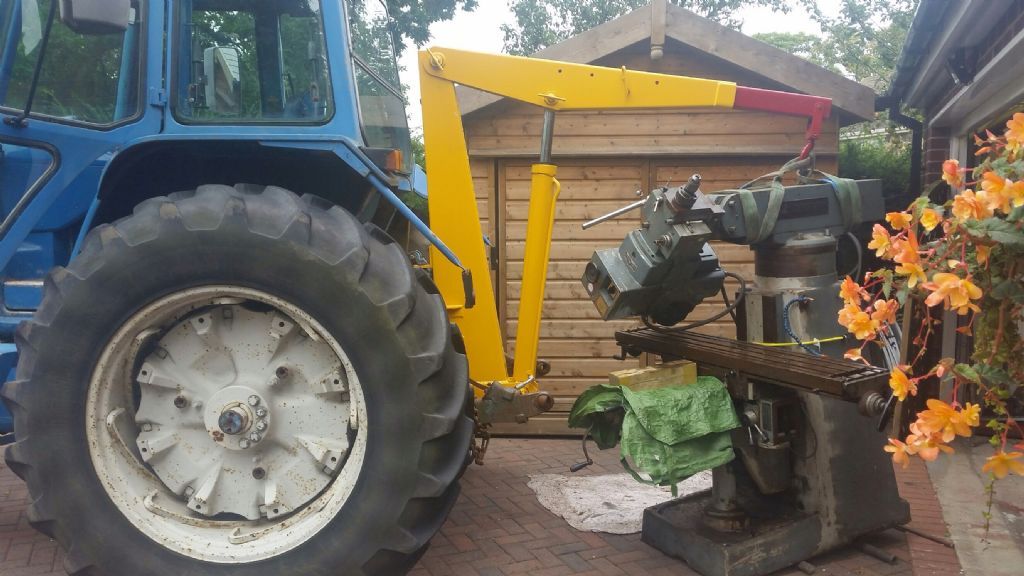Gerry
I have a crane very similar in appearance to the one in your picture. The main difference is that mine is rated to 2 tons with minimum jib extension.
The main difference between the two is size – everything is bigger ( and heavier ) The metal tubes are all larger in cross section with much increased wall thickness, the ram is much higher rated and even the wheels and axles are larger and stronger. It also has a brace on the back ( red ) part of the jib.
To upgrade the 500 kg version to this specification would mean a total re-build ( basically throw it away and start again ).
Having had one for some decades, for my use, which is very infrequent, I would have been much better off hiring the specific lifting apparatus needed for the job in hand, your requirements may differ. In practice mine sulks, in pieces which is the only way I can store it, in a corner and threatens to injure me every time I walk past it.
My comment on heavier is also pertinent. The last time I assembled the crane I found that the weight of the individual components ( legs, jib etc. ) was starting to get toward my limit of lift. Always something to think on as one gets older.
The other problem with the bigger crane is longer legs – very awkward to use unless you have a very large and open shed to work in – mine is now way too cluttered for the crane to be used indoors.
My recommendation, if you can justify having one on hand, would be sell your current one a buy a larger model. The cost of the change over would probably not be much greater the up-rating your present with the subsequent risks that entails.
An alternative that I have considered in the past is to acquire ( or hire ) a manual pallet stacker. These have the advantage of a relatively small footprint – if you have a bench to park the forks under when it's not in use – and can lift a significant weight ( up to 2000 kg for some models ) up to very useful heights ( more than 2 m in some cases ).
Best of luck whichever option you go for.
Pero
Edited By Pero on 09/02/2021 04:20:23
Former Member.







